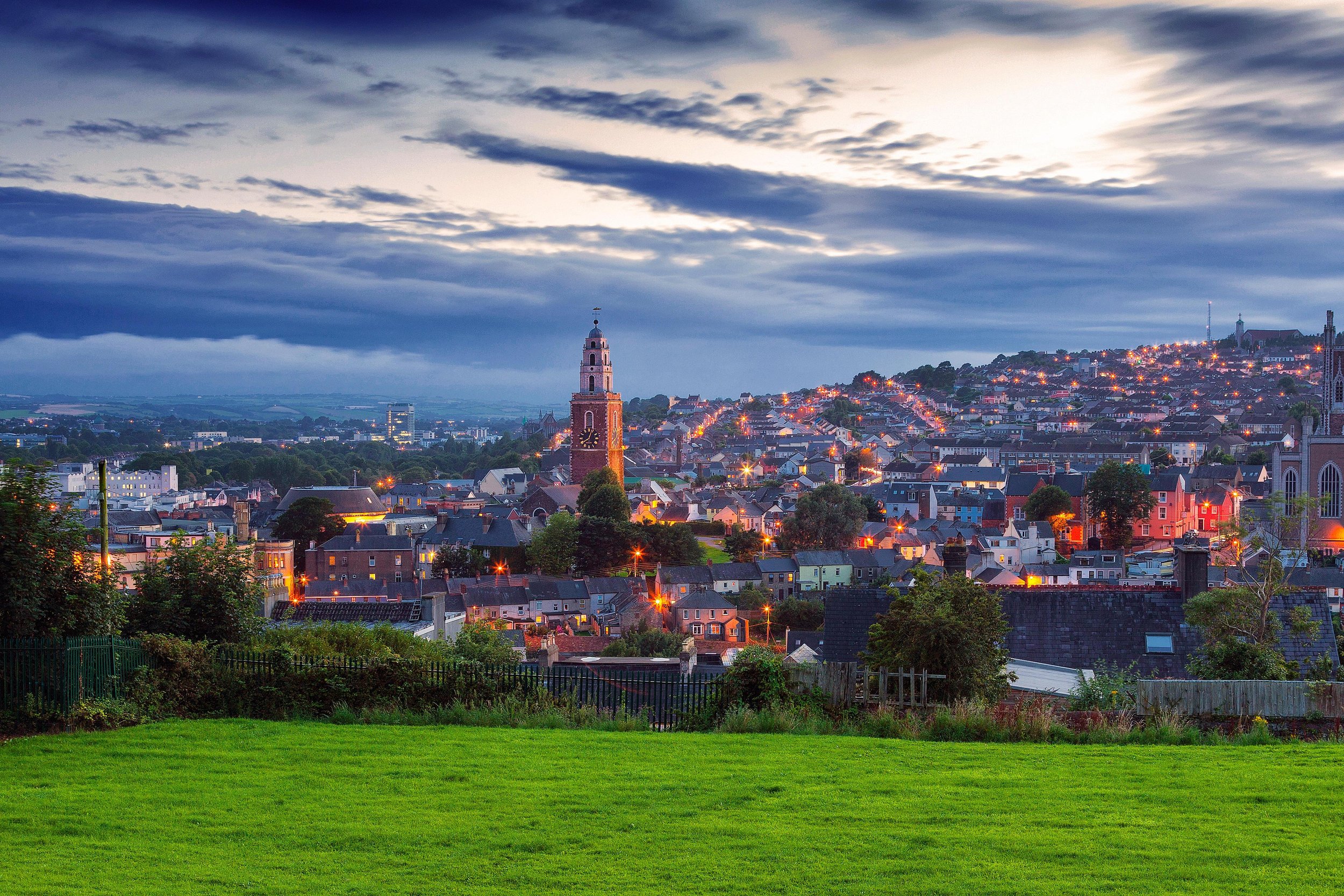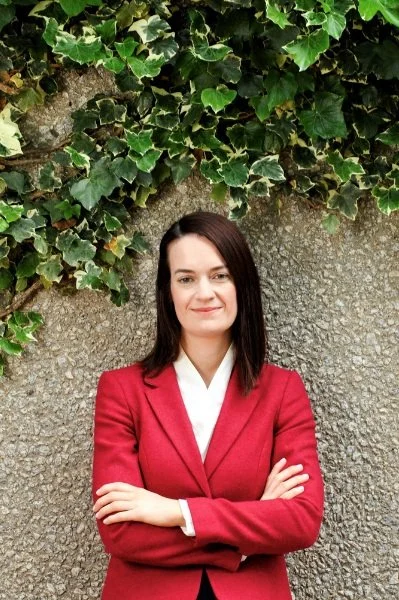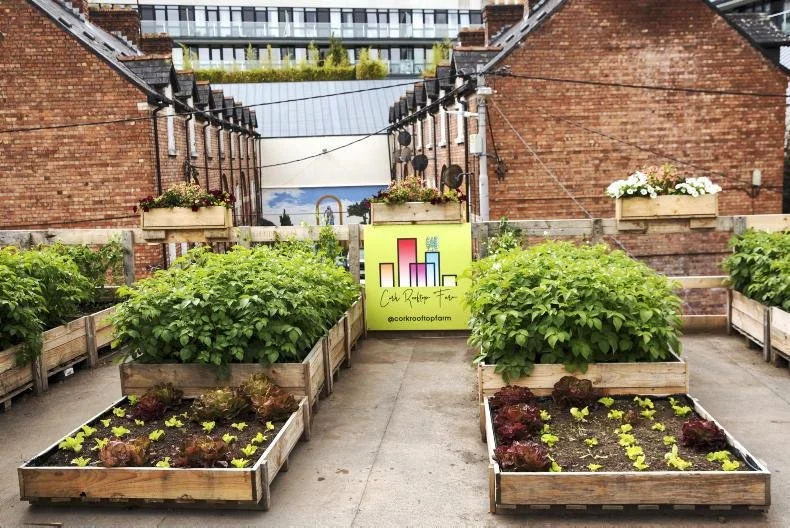Corks Sustainable Future: A self-sustaining Metropolis or a Filthy Overcrowded City?
By Science and Environment Editor Leah Moynihan
What will our city look like in 2050? Will our food be delivered to our homes by flying drones? Will it be grown on the rooftop of the building on the other side of the street in long vertical columns? Will our water be recycled within our homes, and will there be any plastic waste? Will our houses be made from reused materials from structures that came one hundred years before us? Will we travel to our jobs on bicycles that run on solar powered pathways? Will the air going into our lungs be as clean as if in the middle of a forest? Will birds and butterflies hover past us, and will squirrels and hedgehogs hide in the dense shrubs?
This may seem like an unrealistic future; however many cities have already committed to creating more sustainable settlements. It is predicted that the population in the Cork metropolitan area will increase by 60 per cent by 2050. In response, Cork City Council launched its Community Climate Action Fund, making €840,000 available to community groups to fight against climate change. Furthermore, the European Commission selected Cork to be one of the cities leading on climate neutrality. Therefore, local authorities are incentivised to set ambitious targets to make Cork a healthy, resilient, and vibrant place to live. It will become a ‘sustainable city’ or a city that considers the environmental impact for existing populations as well as future generations.
Ongoing research is crucial in informing this process and creating the world of tomorrow. The Environmental Intelligence project funded by Science Foundation Ireland is working on creating net zero cities. It uses sensors, AI, and large digital datasets to gain knowledge on urban population dynamics and air pollution patterns.
Dr Marguerite Nyhan, recipient of an SFI Frontiers for the Future Programme award.
This real-time data informs public health, climate policies, and green urban planning. The project aims to ensure that emission reductions are equitable and that health benefits are maximised for everyone. Thanks to their recent innovations, Cork may soon become a smart sustainable city.
Several projects have already been introduced into the city, including the high-tech ‘CityTrees’. These were established in Cork City centre to improve poor air quality caused by traffic congestion. According to the Environmental Protection Agency (EPA), 1,300 deaths in Ireland each year are caused by air pollution. The innovative ‘CityTrees’ reduce the number of fine dust particles in the air by filtering them through a mixture of moss cultures. The moss absorbs an astounding 80 per cent of fine dust from the air. Cork may also have many eco-industrial parks in the future. These are a group of businesses established in the same area that exchange materials, water, and energy in a symbiotic relationship. This improves economic performance and sustainability. Cork City may also follow Rotterdams ‘Recycled Park’ model which was created from reused plastic waste collected from the nearby river. Underneath the park is a treasure-trove of native wildlife, benefiting everyone in the area.
A major factor to becoming a sustainable city is reducing reliance on greenhouse gases. Transport accounts for 18 per cent of Irelands total emissions and the country has one of the longest commute times in Europe. Plentiful pedestrian and bike paths will reduce the cities carbon footprint, allowing people to walk and cycle safely. We should follow the example of Melbourne where biking or walking allows you to reach shops and work within 20 minutes. The ‘Leapcard’ scheme within Cork City has set out to achieve affordable public transport and Iarnród Éireann has invested €185m to improving Cork’s commuter rail. Additionally, Transport Infrastructure Ireland has committed to designing a Light-Rail service for Cork City. This will interact with the Lee to Sea Greenway and bus corridors in Mahon, Ballincollig, and Blackpool.
An interesting concept is that of solar paths, which would be lain around the city and generate renewable energy for electric bicycles and scooters. Another idea is a city full of delivery drones and driverless cars. These seem far-fetched but technology is always advancing. Renewable powered public transport is becoming a reality in Dublin, and Cork will soon follow. It seems likely that private cars will not be allowed in the city centre in the future. Instead, there will be electric and driverless shuttles, reducing congestion and emissions.
Solar bicycle lane in Utrecht.
In addition to transport, Irelands buildings have the highest emissions in Europe. Over half of the social houses in Cork were constructed before 1970, with some built in the 1800s. Therefore, Cork City Council have several smart retrofitting projects to reduce heat loss. This includes an EU funded project called MiniStor, which uses smart thermal energy storage systems to improve the energy efficiency of homes. It is driven by solar, and a lithium-ion battery stores electrical energy. It is predicted that there will be a 40 per cent reduction in energy in homes with this technology. Cork must invest in infrastructure, such as energy storage and interconnectors, to ensure that our energy production is sustainable while remaining affordable.
An ‘Ecovillage’ in Tipperary has a heating network driven by solar panels and a wood chip boiler. This allows it to have the lowest ecological footprint of any village in Ireland. Another example can be seen in Tallaght, where waste heat from a data centre warms the nearby county council offices. Other projects, such as geothermal district heating and rooftop wind turbines, are also being developed. Furthermore, The Red Wolf project has been adopted by Cork. This uses low carbon electricity from wind or solar from the grid, eliminating the mismatch between usage and production. This project is predicted to remove 20 tonnes of CO2 from the Cork City air. Thanks to Corks coastline, the city has a prime location for harnessing natural resources. Wave, tidal, and offshore wind energy could help Cork in achieving its net zero goal.
Tipperary’s Ecovillage.
Cork will also have to transform into a less wasteful society. This can be done through the circular economy where waste and pollution are eliminated, and resources are put back into the supply chain. Corks Environmental Research Institutes’ NEWTRIENTS project is working on dairy wastewater resource recovery, closing the loop by reusing valuable elements in the effluent. Similarly, the RecEOL project investigates recycling waste such as LCDs, batteries, and printed circuit boards. Many Cork based companies have also embraced the circular economy model, and second-hand clothes shops have appeared rapidly throughout the city.
In order for Cork City to become self-sufficient and sustainable, we must also move away from harmful agricultural practices. Urban farming is when food is produced in cities on unused rooftops, walls, and carparks. This addresses issues such as food scarcity and greenhouse gas emissions.
Green Towers’ Aeroponic planters.
Research advancements have led to the plants not even needing soil to grow. Aquaponics allows the plants to mature in recycled nutrient water in a closed loop process. Similarly, vertical farming is a technique where plants grow in vertical structures, saving on space and resources. UCC launched its own Urban Farm Project in 2022, demonstrating the success of aeroponics, a system that grows plants suspended in the air misted with water nutrient solution. It uses 98 per cent less water than traditional farming. Urban farming mitigates against the urban heat island effect, promotes biodiversity, prevents soil erosion, reduces food miles and waste. Someday, we may even have larger scale ‘farmscrapers’ rising in the middle of our city.
A similar sustainable initiative that Cork has embraced is community gardens. Green Spaces for Health has established greening projects around Cork City, allowing residents to become informed about their food production. Unused spaces are transformed, and humans and nature can coexist. The ideal situation for Cork city would be to plant more trees and meadows, allowing for increased air quality and flood mitigation. Green roofs would reduce the heat effects of concrete structures and they would retain water run-off. Biodiversity in the city would increase, attracting different species of insects and birds.
Cork Rooftop Farm
70 per cent of the world will inhabit cities by 2050. This rapidly growing population will produce shocking amounts of emissions and worsen climate change effects, therefore ambitious decarbonisation plans are essential. Cork City has already put many strategies in place to achieve this. However, we must make sure that nobody is left behind and that our policies reduce inequalities. The sustainable cities of the future must be a place for everybody, where clean air is not a rarity and nutritious food is plentiful for everyone.








